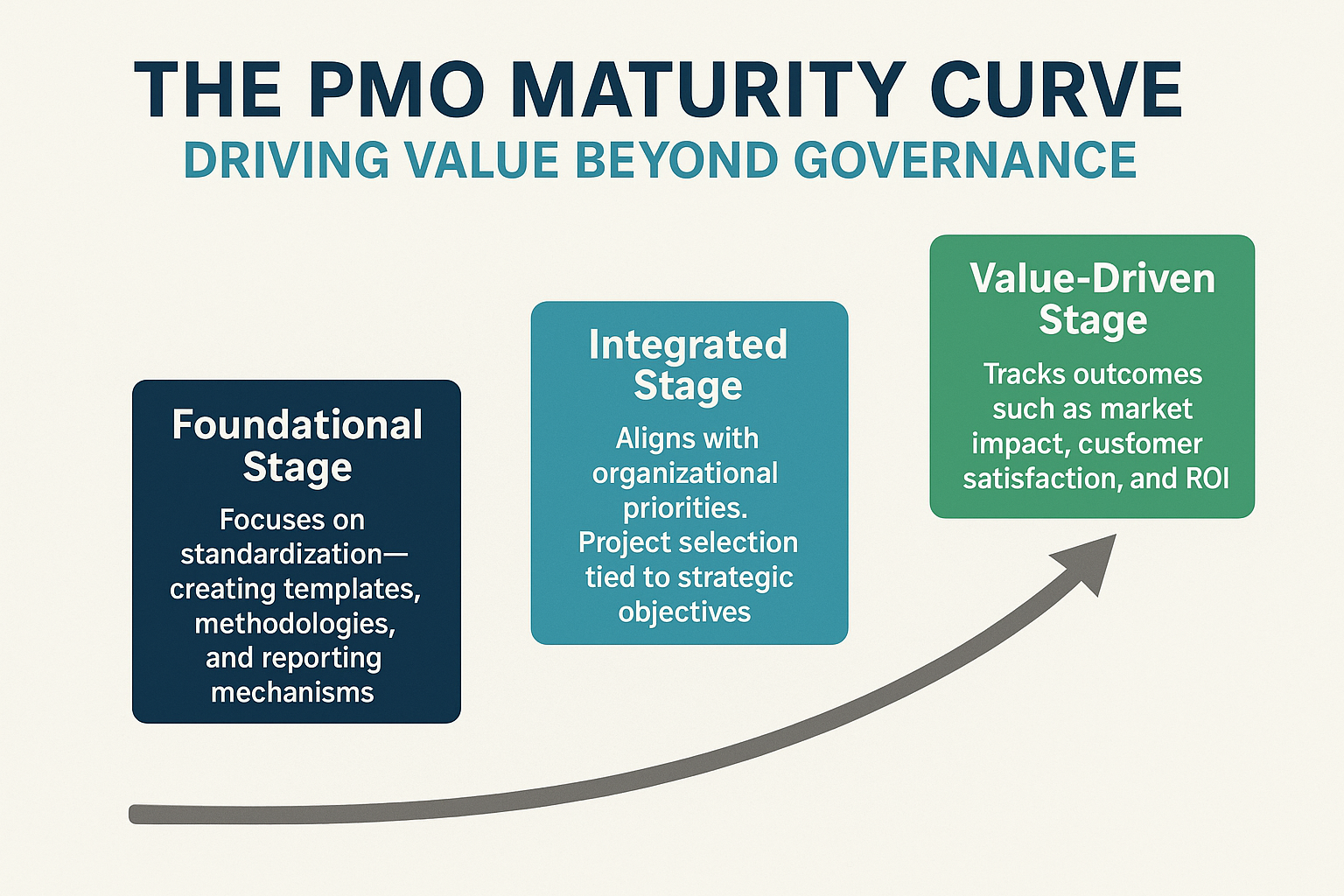For organizations striving to enhance their Project Management Office (PMO), understanding and leveraging PMO maturity models is a game-changer. These models provide a structured framework to evaluate the PMO’s current state and guide its evolution toward delivering maximum value. This article explores the significance of PMO maturity models and how to apply them effectively.
What Are PMO Maturity Models?
PMO maturity models are frameworks that assess the capabilities and effectiveness of a PMO across various dimensions, such as governance, resource management, and strategic alignment. By identifying the PMO’s current maturity level, organizations can prioritize improvements and set realistic goals for progression. According to a 2023 Deloitte study, organizations using maturity models achieve 40% higher project success rates compared to those without such frameworks.
Key Levels of PMO Maturity
Most PMO maturity models, such as the Capability Maturity Model Integration (CMMI) and Gartner’s PMO Model, define stages of maturity, typically ranging from basic to optimized:
- Initial (Ad Hoc): Processes are unstructured, and project success depends on individual effort.
- Developing (Defined): Basic processes and standards are established, but inconsistencies remain.
- Standardized: Processes are formalized, with consistent practices across projects.
- Advanced (Managed): Metrics and data drive decision-making, ensuring proactive management.
- Optimized: The PMO is a strategic partner, fully aligned with organizational goals and continuously improving.
Benefits of Using PMO Maturity Models
PMO maturity models offer a roadmap for growth and ensure alignment with organizational objectives. Key benefits include:
- Enhanced Efficiency: Streamlined processes and standardized methodologies reduce redundancies.
- Improved Decision-Making: Data-driven insights enable more informed choices.
- Stronger Strategic Alignment: Higher maturity levels ensure that projects directly contribute to business goals.
- Scalability: Mature PMOs are better equipped to handle complex, large-scale initiatives.
Implementing a PMO Maturity Model
To apply a PMO maturity model effectively, consider the following steps:
- Assess Current Maturity: Conduct a comprehensive evaluation to determine the PMO’s existing maturity level.
- Identify Gaps: Highlight areas needing improvement, such as governance, resource allocation, or performance tracking.
- Develop a Roadmap: Create a phased plan to address gaps and advance to higher maturity levels.
- Engage Stakeholders: Ensure buy-in from executives and project teams to support the transformation.
- Monitor Progress: Use KPIs and benchmarks to track improvement and recalibrate strategies as needed.
Case Study: A Real-World Application
A global manufacturing company implemented the CMMI maturity model to refine its PMO. Within two years, they advanced from Level 2 (Defined) to Level 4 (Managed), resulting in a 25% reduction in project delivery time and a 30% increase in customer satisfaction.
Conclusion
PMO maturity models serve as a vital tool for organizations aiming to optimize their project management offices. By assessing current capabilities, identifying improvement areas, and implementing a structured roadmap, your PMO can achieve excellence and drive sustainable success.
If you’re aiming to elevate your Project Portfolio Management Office (PPMO) from tactical execution to strategic leadership, understanding your current maturity level is essential. The PPMO Maturity Self-Assessment offers a structured approach to evaluate your organization’s capabilities across key dimensions, including strategic planning, demand intake, portfolio prioritization, project execution, and reporting.
This free, 10-minute assessment provides a comprehensive view of your PPM maturity and project delivery capabilities helping you identify strengths, uncover gaps, and prioritize areas for improvement. By aligning your PPM practices with organizational goals, you can enhance efficiency, improve decision-making, and drive better business outcomes.
Take the next step towards optimizing your PMO: 👉 Start the PPMO Maturity Assessment
References
- “Harnessing PMO Maturity Models for Success” | Deloitte | 2023
- “CMMI: Building Capability” | CMMI Institute | 2022
- “The PMO Imperative” | Gartner | 2023
- “Project Management Maturity Model” | J. Kent Crawford | 2021
- “Global PMO Trends” | KPMG | 2023




